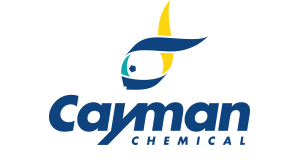Zika Virus NS1 Protein (strain Zika SPH2015) (recombinant)
Zika Virus NS1 Protein (strain Zika SPH2015) (recombinant)
SKU
CAY41078-100
Packaging Unit
100 µg
Manufacturer
Cayman Chemical
Availability:
loading...
Price is loading...
Shelf life (days): 365.0
Formulation: Lyophilized from sterile 20 mM Tris, with 500 mM sodium chloride, pH 8.0, and 10% glycerol
Uniprot ID: A0A0U3FSM8
Purity: ≥90% estimated by SDS-PAGE
Formula Weight: 0.0
Notes: Zika virus (ZIKV) is a mosquito-borne, positive-stranded RNA virus and a member of the Flavivirus genus.{31923,72406} ZIKV infection is associated with fever, rashes, and conjunctivitis, as well as more severe symptoms, which include Guillain-Barré syndrome in adults and microcephaly or congenital malformations in fetuses and newborns.{31923,72408} The single-stranded RNA genome of ZIKV is translated as a polypeptide, which is cleaved by host and viral proteases into structural capsid (C), precursor membrane (prM), and envelope (E) proteins and seven non-structural proteins: NS1, NS2A, NS2B, NS3, NS4A, NS4B, and NS5.{31923,72407} ZIKV NS1 protein is composed of an N-terminal β-roll, a flexible wing domain, and a C-terminal β ladder and is present in the endoplasmic reticulum (ER) as a flat, cross-shaped homodimer with a glycosylated hydrophilic side and a hydrophobic side that forms contacts with lipids and lipid membranes.{69814} It is secreted from the Golgi body as a homohexamer where it can form lipoprotein complexes and interfere with host cell immune signaling.{69814,69815,69816} ZIKV NS1 protein prevents retinoic acid-inducible gene I-induced phosphorylation of TANK-binding kinase 1 (TBK1) and IFN response factor 3 (IRF3), thus inhibiting IFN-β gene expression and secretion from infected host cells.{69815} It also promotes caspase 1-induced cyclic GMP-AMP synthase (cGAS) degradation, further reducing IFN-β signaling and allowing for continued replication of ZIKV in infected cells.{69816} Cayman's Zika Virus NS1 Protein (strain Zika SPH2015) (recombinant) protein consists of 361 amino acids, has a calculated molecular weight of 42.6 kDa, and a predicted N-terminus of Val296 after signal peptide cleavage.
Formulation: Lyophilized from sterile 20 mM Tris, with 500 mM sodium chloride, pH 8.0, and 10% glycerol
Uniprot ID: A0A0U3FSM8
Purity: ≥90% estimated by SDS-PAGE
Formula Weight: 0.0
Notes: Zika virus (ZIKV) is a mosquito-borne, positive-stranded RNA virus and a member of the Flavivirus genus.{31923,72406} ZIKV infection is associated with fever, rashes, and conjunctivitis, as well as more severe symptoms, which include Guillain-Barré syndrome in adults and microcephaly or congenital malformations in fetuses and newborns.{31923,72408} The single-stranded RNA genome of ZIKV is translated as a polypeptide, which is cleaved by host and viral proteases into structural capsid (C), precursor membrane (prM), and envelope (E) proteins and seven non-structural proteins: NS1, NS2A, NS2B, NS3, NS4A, NS4B, and NS5.{31923,72407} ZIKV NS1 protein is composed of an N-terminal β-roll, a flexible wing domain, and a C-terminal β ladder and is present in the endoplasmic reticulum (ER) as a flat, cross-shaped homodimer with a glycosylated hydrophilic side and a hydrophobic side that forms contacts with lipids and lipid membranes.{69814} It is secreted from the Golgi body as a homohexamer where it can form lipoprotein complexes and interfere with host cell immune signaling.{69814,69815,69816} ZIKV NS1 protein prevents retinoic acid-inducible gene I-induced phosphorylation of TANK-binding kinase 1 (TBK1) and IFN response factor 3 (IRF3), thus inhibiting IFN-β gene expression and secretion from infected host cells.{69815} It also promotes caspase 1-induced cyclic GMP-AMP synthase (cGAS) degradation, further reducing IFN-β signaling and allowing for continued replication of ZIKV in infected cells.{69816} Cayman's Zika Virus NS1 Protein (strain Zika SPH2015) (recombinant) protein consists of 361 amino acids, has a calculated molecular weight of 42.6 kDa, and a predicted N-terminus of Val296 after signal peptide cleavage.
| SKU | CAY41078-100 |
|---|---|
| Manufacturer | Cayman Chemical |
| Manufacturer SKU | 41078-100 |
| Package Unit | 100 µg |
| Quantity Unit | STK |
| Product information (PDF) | Download |
| MSDS (PDF) |
|

 Deutsch
Deutsch










